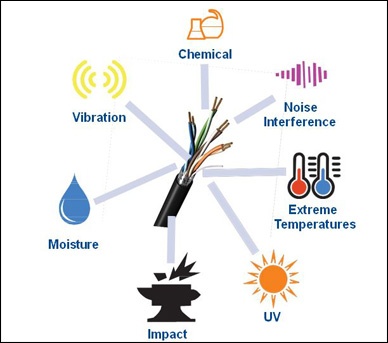不过时的油气网络:四个注意事项
Even with a rosy forecast, no industry is immune to challenges, and oil and gas is no exception. The oil and gas sector faces a unique array of pain points, from traditional concerns of safety and reliability, downtime and availability to dynamic new-age issues, such as regulatory and cyber security concerns. The key for overcoming these obstacles is having a sound and secure networking infrastructure.

The oil and gas industry is set for expansion, but with this growth comes new challenges to consider, including cyber security concerns. The best way to prepare is to ensure the communications network is future-proof and designed to withstand whatever comes its way.
Reliable Oil and Gas Communication: Who’s Most Impacted?
Regardless of your role – distributor, system integrator, design engineer, IT manager, original equipment manufacturer, or end-user—everyone who touches the oil and gas industry has a stake in the successful design of the communications network.
If your infrastructure is not up to par, costly network downtime can occur. This results in less productivity, delayed downstream processes and loss of service to customers relying on the production of oil and gas.
It’s important that teams across every step of oil and gas production, including upstream (hydraulic fracturing, oil field monitoring and offshore rigs), midstream (pipeline monitoring and pumping stations) and downstream (refineries and gas stations) applications, use dependable network components that can withstand harsh industrial conditions for the highest network reliability and availability.
New Challenges for Oil and Gas Communication
Quick and easy networking design that offers the utmost commissioning and control is key for success in the control room and across all oil and gas applications, especially in the face of new and complex threats.
Cybersecurity is quickly becoming a big concern for industries everywhere, especially oil and gas. Between 2011 and 2015, the U.S. Department of Homeland Security registered more than 350 incidents and 900 security vulnerabilities with U.S. energy companies, which is higher than any other industry. The Energy Sector-Specific plan covers the risk management framework for the industry.
A major contributing factor to oil and gas company vulnerability is that many have outdated, aging control systems in their facilities that rely on non-standard and insecure network components. And with the rise of the Industrial Internet of Things (IIoT) and an increased reliance on connected devices, the security challenges will become even greater.
Combating Future Challenges: Four Things to Consider
In the face of increased risks and outdated technology, oil and gas companies need to choose future-proof networking components designed to support new and expanded technologies.
When considering how to design the network, teams should look for components that meet the following requirements:
- Safety and reliability: Remote monitoring solutions offering high network visibility and control are helpful, in addition to leading industrial security and firewall products for Layer 2 and Layer 3 networks. Look for components designed to withstand the harshest environmental conditions and ensure they meet all possible classification types for each site for UL Class I Division 2 and ATEX compliance. Transmission capability up to 170km without using active repeaters in between is ideal for oil and gas applications.
- Lower operational costs: Constant maintenance-related updates—especially in difficult-to-reach areas such as deep water shelters below 200-400m of the surface—are costly when maintenance and downtime are considered collectively. Maintenance-free remote networking solutions enable proactive monitoring of wells and fields allowing for preventable measures to avoid unplanned downtime. Using multi-Gigabit solutions with extended bandwidth and expandability are flexible and cost-effective tools that can lower operating costs.
- Minimal installation efforts: Installation can be costly in most industrial settings—but even more costly in extreme oil and gas settings—which are often underwater. Wide local area network (WLAN) solutions that meet the ATEX Zone 2 standard for oil and gas applications can help reduce wire line installation costs and enable teams to get closer to the field level for a more seamless installation.
- Withstand harsh environments: A critical step team should take to ensure a solid communications network is to invest in high-quality, ruggedized Ethernet infrastructure designed specifically for harsh environments. In addition, it’s essential to understand when and where to use industrial-grade components versus those designed for commercial settings. Go with a solution guaranteed to withstand the corrosive and often extreme conditions apparent in oil and gas applications including water immersion, crushing/abrasion, UV exposure, chemical exposure, extreme temperatures, and prolonged vibration/noise for success of upstream, midstream and downstream processes.

Oil and gas applications expose network components, like cabling, to very harsh conditions. Teams need to choose solutions that will offer the highest reliability, safety and availability amidst vibration, moisture and extreme temperatures.
The oil and gas industry is poised for growth, but to take advantage, teams need to ensure their control rooms and overall communications infrastructure are well-equipped to support expansion, harsh environments and modern technologies. Success requires the right combination of switches, cabling, firewalls and wireless components that deliver on the team’s unique needs, protect against evolving threats and add to the bottom-line.